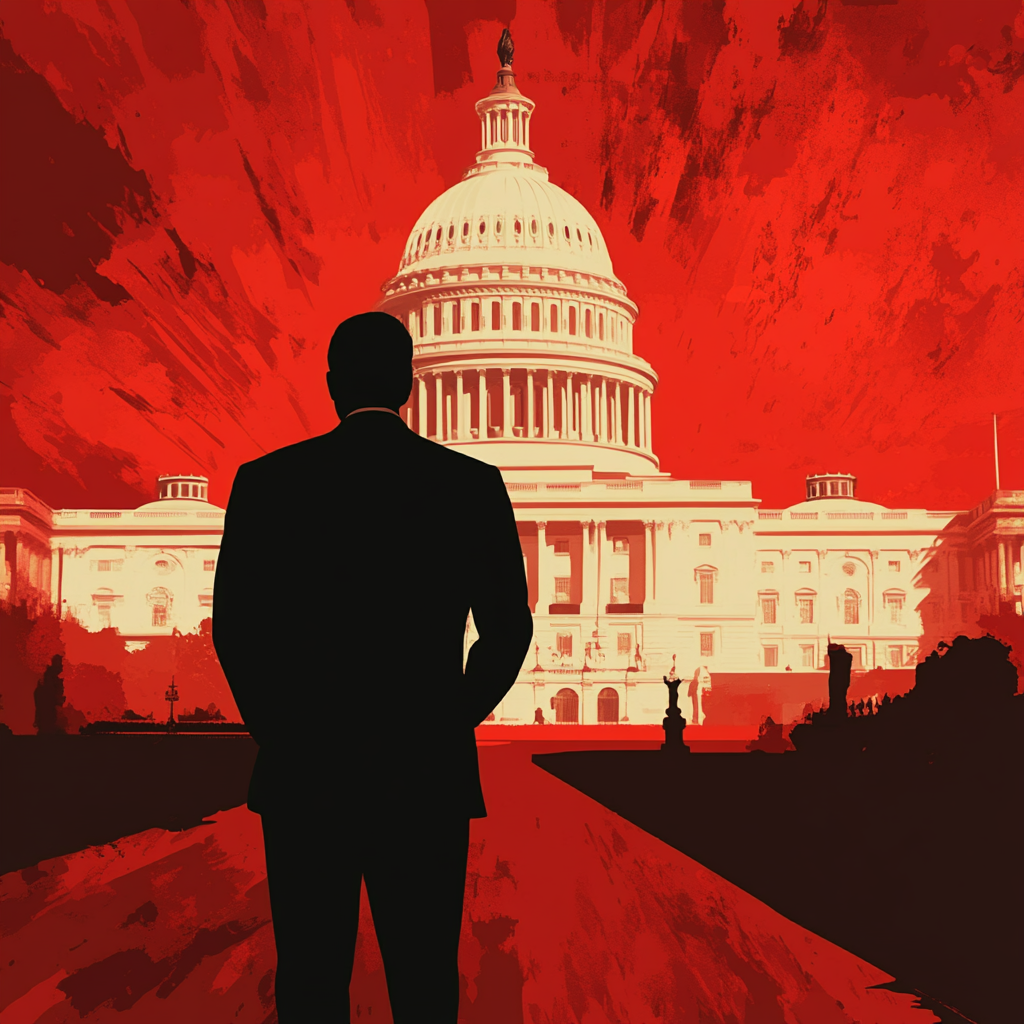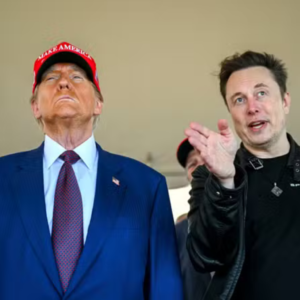This is Part 2 of a 6-Part Series on the Trump/DOGE Government Employee Firings.
Part 1: Employee Impacts of Trump/DOGE Government Firings
In a continuation of the unprecedented federal workforce reductions initiated by the Trump administration, probationary employees have emerged as the latest targets of widespread layoffs. These employees, typically with less than a year of service, lack the civil service protections afforded to more tenured government workers, making them particularly vulnerable to job cuts. With executive authority increasingly concentrated in the Oval Office and figures such as Elon Musk wielding influence without electoral accountability, concerns about unchecked power and the erosion of government institutions have only intensified.
Probationary Employees and the Layoffs
Probationary employees in the federal government serve a trial period of typically one year before gaining full civil service protections. During this period, they can be dismissed without the extensive procedural safeguards required for career federal employees. The Trump administration leveraged this lack of protection to implement rapid and large-scale terminations, justifying the move as part of broader government efficiency efforts. However, the sheer volume of these dismissals raised questions about the administration’s true motives—whether they were genuinely about streamlining bureaucracy or about consolidating executive power and dismantling government agencies from within.
On February 13th, the administration directed all federal agencies to lay off nearly all probationary employees. This sweeping mandate came without warning, leaving thousands of workers unemployed overnight and disrupting critical government operations. While the administration framed these firings as necessary cost-cutting measures, labor advocates and government watchdogs saw them as a calculated effort to weaken federal institutions. The move also sparked concerns that it could discourage future talent from seeking federal employment, fearing instability and political purges.
According to data from the Office of Personnel Management (OPM), as of March 2024, approximately 220,000 federal employees were still in their probationary period. The scale of potential layoffs, therefore, remained vast, with agencies across the federal government forced to make abrupt staffing reductions. The lack of transparency surrounding these cuts made it difficult to assess the full impact, but reports from affected agencies painted a picture of severe disruption and diminished government capacity.
Probationary Employee Cuts Across Federal Agencies
Department of Health and Human Services (HHS)
The Department of Health and Human Services (HHS), which oversees the nation’s public health infrastructure, was particularly hard-hit by the probationary employee layoffs. The cuts extended across multiple agencies under HHS, threatening the effectiveness of key public health initiatives.
At the Centers for Disease Control and Prevention (CDC), nearly 1,300 probationary employees—approximately one-tenth of the agency’s workforce—were initially marked for termination. While the final number of layoffs was closer to 700, the loss of these employees raised concerns about the CDC’s ability to respond to public health emergencies, particularly in the wake of the COVID-19 pandemic and emerging health threats.

Other major HHS agencies, including the National Institutes of Health (NIH), the Food and Drug Administration (FDA), and the Centers for Medicare and Medicaid Services (CMS), also saw significant reductions in their probationary workforce. The absence of an official count from HHS has made it difficult to determine the full impact, but sources within these agencies reported increased workloads and operational slowdowns as a result of the cuts.
As Trump/DOGE blindly fire thousands of federal employees, a new American trend has emerged of streamlining overseas hires with outsourced HR services. The invention and growth of EOR services paints a dark picture for many highly educated Americans, and for the American Dream in general.
Department of Homeland Security (DHS)
The Department of Homeland Security (DHS), responsible for national security and emergency preparedness, was another agency that implemented widespread probationary employee layoffs. These cuts affected multiple DHS divisions, raising concerns about their ability to protect the country’s critical infrastructure.
The Cybersecurity and Infrastructure Security Agency (CISA), which plays a crucial role in defending the nation’s cyber infrastructure and election security, saw over 130 probationary employees terminated. The timing of these layoffs was particularly concerning given ongoing concerns about election security and foreign interference. It remains unclear whether the layoffs included 17 employees who had previously been placed on leave for their work on election security initiatives, further fueling speculation about political motivations behind the cuts.
Additionally, at the Federal Emergency Management Agency (FEMA), four probationary employees were fired on February 11th. These included the agency’s chief financial officer, two program analysts, and a grant specialist, all of whom had been involved in overseeing payments to reimburse New York City for hotel costs related to migrant relocation. The sudden dismissals raised alarms about FEMA’s ability to manage disaster response and financial oversight effectively.
Internal Revenue Service (IRS)
The Internal Revenue Service (IRS) announced plans to lay off thousands of probationary employees in the midst of tax season, a move that could have significant repercussions for the agency’s ability to process tax returns efficiently.
With tax season already presenting a high-demand period for the IRS, the decision to eliminate a substantial portion of its workforce was widely criticized. The precise number of affected employees and the exact timing of their terminations have not been publicly disclosed, further fueling concerns about the lack of transparency in the administration’s approach to workforce reductions. Taxpayers could face delays in receiving refunds, and the agency’s enforcement capabilities may be weakened, benefiting those attempting to evade tax obligations.
National Park Service (NPS)
The National Park Service (NPS) was another agency severely impacted by the layoffs, with approximately 1,000 probationary employees terminated. These employees were responsible for maintaining parks, providing educational programs, and assisting visitors, making their removal particularly detrimental to park operations.
The layoffs threaten to reduce services across national parks, potentially leading to longer wait times, unclean facilities, and decreased educational programming. As millions of Americans visit national parks each year, these cuts could significantly impact the public’s experience, particularly in heavily trafficked locations such as Yellowstone, the Grand Canyon, and Yosemite.
Summary of Probationary Employee Cuts
| Agency | Number of Employees Terminated | Key Impact |
|---|---|---|
| Department of Health and Human Services (HHS) | ~700 (CDC) + Unknown (NIH, FDA, CMS) | Potential disruption to public health programs and services |
| Department of Homeland Security (DHS) | >130 (CISA) + 4 (FEMA) | Potential impact on cybersecurity and election security efforts, as well as disaster response |
| Internal Revenue Service (IRS) | Thousands | Potential delays in tax processing and refunds during tax season |
| National Park Service (NPS) | ~1,000 | Potential reduction in park services and visitor experience |
The widespread layoffs of probationary employees under the Trump administration mark another chapter in the ongoing efforts to reshape the federal workforce. While the administration justified these terminations as necessary efficiency measures, the sheer scale of the cuts and their impact on essential government functions suggest a broader effort to consolidate power and weaken key institutions. With individuals like Elon Musk exerting influence over federal decisions without electoral accountability, concerns about the erosion of democratic governance and the increasing concentration of executive power continue to grow.
As agencies struggle to adapt to these sudden staffing reductions, the long-term consequences remain uncertain. What is clear, however, is that these workforce cuts have already disrupted critical government functions, potentially affecting public health, national security, tax administration, and environmental conservation. The precedent set by these actions raises important questions about the future of the civil service and the extent to which executive power should be allowed to dictate the fate of federal employees without checks and balances.





